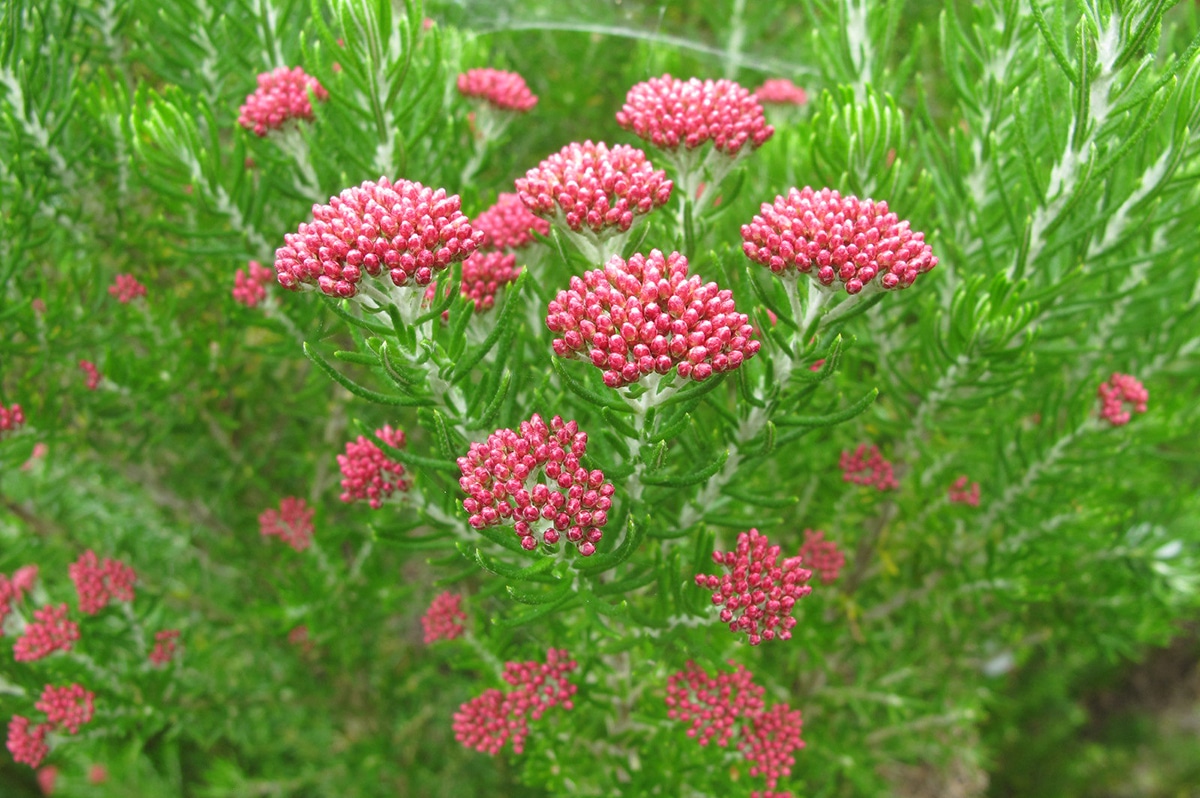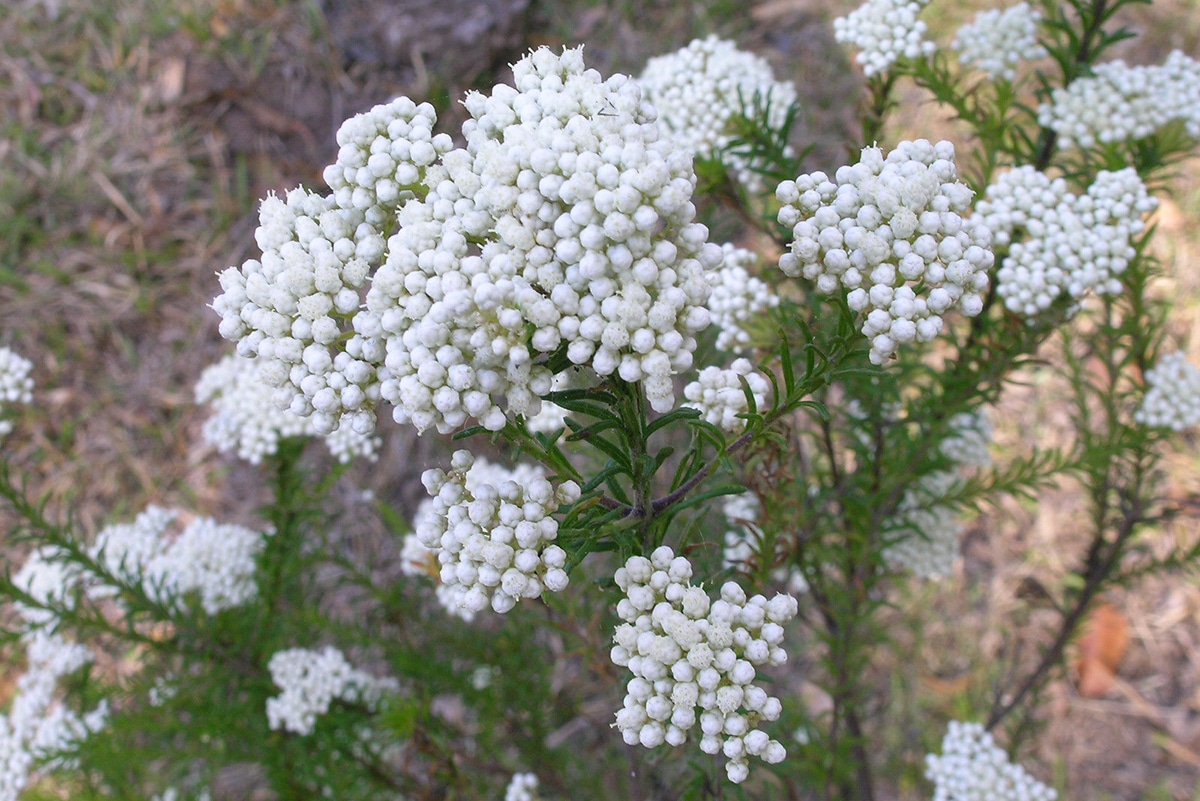
ozothamnus, also known as rice flower, is a genus of plants belonging to the family AsteraceaeOriginally from Australia and New Zealand. These plants are known for their beauty and aroma, and are common in rock gardens and in montane settings. Despite their beauty, these plants are very drought tolerant and require little maintenance, making them ideal for gardens.
Furthermore, some species of ozothamnus they have aromatic leaves and flowers that are used to scent soaps and cosmetics. They are also used to treat different conditions such as headaches, colds, coughs, and stomach problems. Next we will comment what exactly is this genus and what are the specific care to cultivate ozothamnus in a garden, as well as the most common pests and diseases and how to prevent them.
What is the genus Ozothamnus?

Let's start by explaining what it is ozothamnus. Well, it is a genus of plants belonging to the family Asteraceae. They are commonly known as "mountain scents" or "rock scents" due to their fragrant flowers and preference for growing on rocky or stony soil. They are also known as "rice flower" because of the curious appearance they have.
these vegetables They are native to Australia and New Zealand. and are usually small shrubs or subshrubs with green leaves and spike-shaped flowers. The latter are usually white, pink or red and appear in the spring and summer. Species belonging to this genus are common in rock gardens and adapt well to temperate climate conditions.
ozothamnus They tend to grow in temperate to cool climates, and are found primarily in Australia and New Zealand, although some species are also found in South America. These plants prefer rocky or stony soils and do well in places with poor soil and low humidity. They are often found in mountains and hills, and are common in medium and high altitude environments. They are also common in rock gardens and Mediterranean-style gardens due to their drought tolerance and preference for poor soil.
Uses and benefits
The uses and benefits of the plants of the genus ozothamnus they are mainly decorative, having attractive flowers and green leaves. Nevertheless, some species belonging to this genus also have traditional medicinal and culinary uses. For example, some types of ozothamnus they have aromatic leaves and flowers that are used to scent soaps and cosmetics. Also, some of these spices are used to treat different conditions such as headaches, colds, coughs, and stomach problems. However, it is important to note that there are no scientific studies to support these uses and benefits and they are not approved for medicinal use.
As for gardening, these plants are ideal for rock gardens and Mediterranean-style gardens, since they tolerate drought very well and do not require much care. For this reason they are highly recommended plants for the newest in this world. In addition, they are really precious in any space thanks to their high ornamental value.
What are the cares for Ozothamnus?

Now that we know a little more about the genre ozothamnus, let's see what care these vegetables require. Growing these plants is generally very straightforward, as they are very drought tolerant and do not require much watering. Nevertheless, It is important to take into account some recommendations to ensure its healthy growth:
- Light: Plants belonging to this genus prefer sunny locations, but also tolerate partial shade.
- Ground: The best soils for ozothamnus They are rocky or stony, but they adapt well to sandy or clayey soils with good drainage. The soil does not need to be rich in nutrients.
- Irrigation: As we have already mentioned above, these plants are drought tolerant, so they do not require a lot of watering. However, it is important to keep the soil moist for the first few months after planting. Once established, they only require watering in periods of prolonged drought.
- Pruning: Although it is true that the plants belonging to this genus do not require regular pruning, it is advisable to do so after flowering to maintain their shape and prevent them from becoming too large.
- Fertilizer: It is not really necessary to fertilize the plants of ozothamnus on regular basis. However, if we want to improve its growth, it is advisable to apply organic fertilizers in spring.
Plagues and diseases
Knowing the basic care of a plant is not enough, we must also know what are the pests and diseases that can affect it, to be vigilant and be able to act on time. In the case of ozothamnus, are generally uncommon, as they are very hardy plants. However, some pests and diseases that can affect them include the following:
- Aphids: These insects can cause black spots on the leaves and cause a decrease in the growth of the affected plant. They can be controlled with specific insecticides or with biological control. See file.
- Mites: The mites can cause wrinkles and spots on the leaves, apart from reducing the production of flowers. They can be controlled with specific insecticides or with biological control. See file.
- Fungi: Some fungal diseases, such as rust or mildew, can affect the leaves and cause a decrease in growth. These diseases can be prevented with good cultural practices, such as avoiding overwatering and maintaining good soil drainage. See file.
- root rot: Root rot can be caused by excess water in the soil or inadequate drainage. It is important to keep the soil well drained and avoid overwatering to prevent this disease.
It should be noted that it is extremely important to identify the pest or disease that is affecting the plant in order to carry out an adequate treatment on time. Generally, It is advisable to carry out good maintenance of the vegetables and apply preventive control measures to avoid problems with pests and diseases.
Without a doubt, these plants are ideal for decorating our garden.